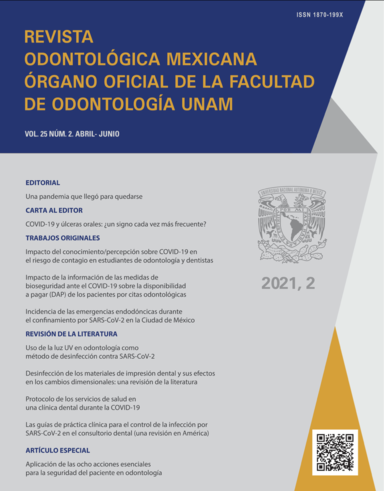Disinfection of dental impression materials and its effects on dimensional changes: a literature review
Contenido principal del artículo
Resumen
A disinfectant must meet two fundamental requirements: be an effective antimicrobial agent and preserve the dimensional stability and surface details of the impression. This allows to obtain much more accurate plaster models that allow the fabrication of prostheses. The most recommended procedures are immersion and spraying, using disinfectant solutions such as sodium hypochlorite, glutaraldehyde, iodophors and phenols at different concentrations. The available impression materials were not originally formulated to disinfect, so there is the potential for disinfection procedures to alter the physical features of the impressions and consequently the characteristics of the plater model. That is why the aim of this updated review is to know the effect of disinfectants on the dimensional stability of different impression materials after being subjected to different disinfection methods.
Detalles del artículo

Revista Odontológica Mexicana por Universidad Nacional Autónoma de México se distribuye bajo una Licencia Creative Commons Atribución-NoComercial-SinDerivar 4.0 Internacional.
Basada en una obra en http://revistas.unam.mx/index.php/rom.
